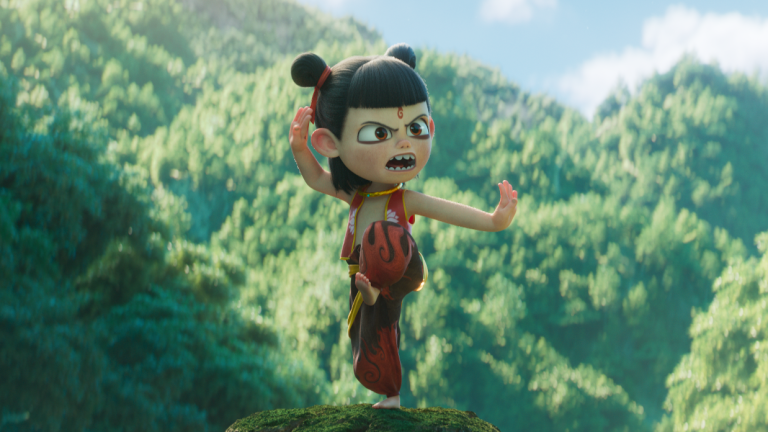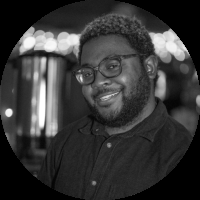Ne Zha 2 and the Secret of Making a Good Dub for Anime and Donghua
The arrival of Ne Zha 2 in English raises the eternal question for Western fans of anime and other foreign animation: is there such a thing as a good dub and what makes it worth watching over subtitles?

English dubbing of international animated films is a sticky tightrope to walk across. When done correctly, it can make a property enduring in the minds of animation fans. When done wrong, it goes down in infamy and, in today’s tech-savvy times, becomes a meme to be clowned on forever. Ne Zha as a story and franchise is not unfamiliar with dubbing. The first installment in the donghua franchise from 2019 had its own English-language version via WellGoUSA. However, when it came to the record-breaking Ne Zha 2, those stateside dubbing rights went to… A24?! What?!
The indie tastemakers have never acquired an animated movie before. This is also the first fully CG one under their belt as well. Believe me, I have seen the subbed version about three times now. It’s the highest-grossing animated film of all time for a reason: it’s a stunning action spectacle with a strong anti-imperialist message. Where does the Ne Zha 2 dub stand in relation to the original, then? Furthermore, what in general makes a good dub, and does A24’s release of Ne Zha 2 meet that criteria?
Some studios are better at translation than others
There are ample amounts of dubbing studios that exist within the States and beyond. That being said, Crunchyroll, which produces their dubbing in-house via their Texas base, has been the most well-known and respected. In terms of dubbing quality, that is. The voice acting within the anime and movies they acquire has often been above quality since Funimation began handling that element in the ‘90s (Crunchyroll merged with Funimation in 2021). Well, other than the Funimation-produced “Ocean dub” of Dragon Ball Z from 1996, which was recorded in Vancouver and could be called the show’s peach fuzz era. A significant portion of this is due to the exceptional talent of the voice actors, who are true artists who imbue their characters with personality and life.
There is also the LA-based Bang Zoom! Entertainment,whichisare killing it with their produced dubbing on Demon Slayer and Dandadan, two of the trendiest animes right now.
Celebrity voices occasionally provide dubs for bigger productions, especially Studio Ghibli productions. It started when Disney had the U.S. distribution rights during the 2000s and had the likes of Fanning sisters in My Neighbor Totoro, Christian Bale as the titular Howl in Howl’s Moving Castle, and Claire Danes as Princess Mononoke. All of which are rather good dubs. Nowadays though the Ghibli films are distributed by GKids, who keep up the tradition, as seen in The Boy and the Heron and its almost entirely celebrity-based vocal cast.
Even so, Heron raised the standard, at least when it came to using celebrity voices and flawless dubbing. That voice cast included Robert Pattinson, Karen Fukuhara, Gemma Chan, Christian Bale, Mark Hamill, Florence Pugh, Willem Dafoe, Dave Bautista, Mamoudou Athie, Tony Revolori, and Dan Stevens. As the titular Heron, Pattinson’s harsh and raspy voice mimics Danny DeVito’s, but because it’s Batman and not the Penguin, it’s completely unrecognizable and gives the character a lot of life. Similarly, Pugh is remarkable in her ability to portray both the youthful and elderly versions of Kiriko.
There’s a wealth of both voice acting artists and celebrities present in Ne Zha 2 as well. The cast from the dubbed predecessor, including Aleks Le, Vincent Rodriguez III, and Griffin Puatu, reprise their roles as Ao Bing, Li Jing, and teenage Ne Zha, respectively. Meanwhile Oscar-winner Michelle Yeoh is the only well-known voice this time around, portraying Lady Jin, Ne Zha’s mother. One can only imagine that A24 has her on speed dial thanks to Everything Everywhere All at Once and is using her presence as a marketing ploy to get Americans to go to the theater.
Yet I wouldn’t be lying if I said she was a negative aspect of the dub, and I mean no disrespect to the queen herself. Yeoh’s voice just doesn’t fit that character at all. Yeoh’s voice is of a low register, and her attempts to go to a higher octave to align with her youthful design are unsuccessful.
Should a Dub Performance Mimic the Original Performance?
A good dub can sometimes be defined by how quickly these artists adapt the tone and add elegance to the animation that is displayed on screen, allowing you to feel the characters’ complex emotions even when the translations are one-to-one. Voice actors who do dubs often talk for a long time about how a character should sound and how to give them personality.
In certain instances, their work surpasses the original language of origin. I cannot think of watching Dragon Ball Z without hearing Sean Schemmel’s voice as Goku or Christopher Sabat as Vegeta and Piccolo. Nor would I think of My Hero Academia‘s Izuku Midoriya without Justin Briner. These characters even have a sonority that makes them seem like flawless versions of themselves, giving them depth and new vitality.
I recently began watching Dandadan occasionally with both the subtitled and dubbed versions interspersed per episode to hear the translation and the distinctions. Abby Trott as Momo Ayase and A.J. Beckles as Takakura Ken are exceedingly enjoyable to listen to.
Ne Zha 2 prospers in the sense of almost everyone (sorry, Ms. Yeoh) sounding like their respective characters. In this instance, A24 followed the same approach as the Chinese source and recruited voice actress Crystal Lee to portray the eponymous, rebellious, hot-tempered scamp Ne Zha. She excels in ensuring Ne Zha sounds as gruff, deadpan, and hyperactive as Yanting Lü’s line deliveries in the original Chinese version. The same is true for additional strong recasts, such as Rick Zieff as Master Taiyi Zhenren, who exudes a comical flamboyance that is more amusing than the voice of the predecessor, Mike Pollock, whose voice I only associate with Dr. Eggman from Sonic the Hedgehog.
That being said, the credit goes to the voice directors and the actors who bring these drawings to life. A lot of voice actors pour their hearts, voices, and passion into the booth, showing off their range and making the characters their own. It’s an artistry and even the highest caliber of celebrities can pull off incredible dubbing work that gives the film or show they’re contributing to its justice.
Is Ne Zha 2’s dub as good as the Mandarin original?
Here’s the thing. Ne Zha 2’s dub is okay. In addition to improving on most recasts, it retains numerous voice actors from the previous installment who continue to texture these characters fairly well. It also features some legends in supporting parts, including Fred Tatasciore, Candi Milo, Eric Bauza, and Kari Wahlgren. The writing is the primary problem in this case. The dub seems to be trying to keep the style of writer-director Jiao Zi’s original script while overworking the dialogue instead of capturing the spirit of some of the subtle and smarter lines.
As a result of this, it feels more hyperactive than the subtitled Chinese version—which is frantic enough already. According to my memory, the original lines are sometimes still there (the last few words in particular made me smile), but other times they are pale in comparison. Despite the Michelle Yeoh stunt casting being genuinely distracting, A24’s attempt is a fine translation that is about, on par, if not slightly better than, the WellGoUSA version.
